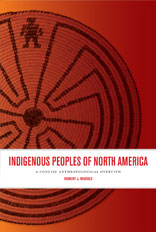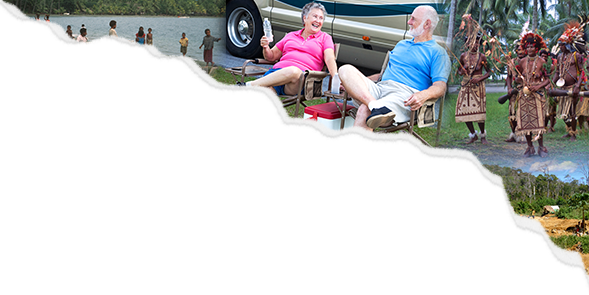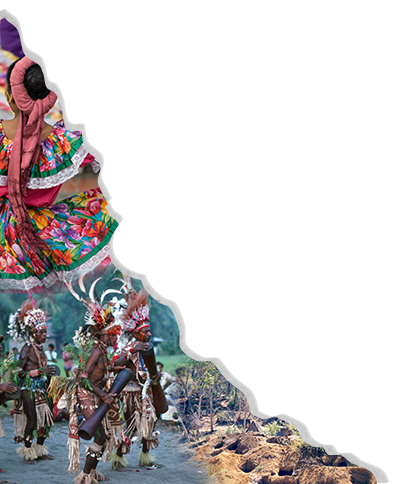
In the second of a series of regular online interviews, the author of Indigenous Peoples of North America: A Concise Anthropological Overview, Bob Muckle, shares his inspirations for writing the book, his hopes for what readers of the book will retain, his approach to teaching, and some suggestions for Twitter feeds and videos that can be used in the classroom.
TC: What inspired you to write Indigenous Peoples of North America?
BM: The inspiration for me to write Indigenous Peoples of North America was three-fold. Mostly, it was borne from frustration—the frustration of not wanting to teach an Indigenous Peoples of North America course the way a few of the major texts on the topic were organized, and frustration with what I perceive to be the ridiculously high price for the one text I found that was suitable in overall design and organization. Secondly, I was inspired by positive reviews and considerable success I have had with a book on the First Nations of British Columbia. I modeled Indigenous Peoples of North America on this book. Thirdly, I was inspired by the requests of many of my students, friends, and colleagues to write the book.
TC: What is your favourite part of the book?
BM: My favourite part of the book is the epilogue, in which I simply state and summarize the six main things I hope readers of the book will retain and pass on. Even though the book itself is quite concise, it is unreasonable to think that readers will retain the details. If every reader could remember and understand the six main points I would be very, very pleased.
The six main points are:
- There are many different labels for the Indigenous peoples of North America, each with its own meaning.
- The archaeological record of North America is vast.
- Prior to the arrival of Europeans, North America was populated by a wide variety of people with diverse cultures.
- The colonization of the continent by Europeans was devastating to Indigenous peoples and cultures.
- Indigenous peoples have been remarkably resilient.
- The development of North American anthropology has been intricately intertwined with the Indigenous peoples of the continent.
TC: How do you see this book being used in the classroom? Is there anything unique about it that would be particularly helpful to those teaching undergraduate anthropology?
BM: I see the book being used in anthropology courses focusing on the Indigenous peoples (or Natives, or Indians) of North America as a core text. It provides a basic framework upon which the instructor or students may expand according to their own interests (e.g. regional, topical, or temporal). I also see it being used as a supplementary or recommended text for other courses, in anthropology and other disciplines, that includes topics related to the Indigenous peoples of North America (e.g. history, political studies, sociology, health, social work, or law).
TC: What are your favourite courses to teach?
BM: I enjoy all the courses I teach. Each one brings different benefits. I always like teaching Indigenous Peoples of North America since it is an area of immense interest to me and to the students who enroll in it. I also enjoy introducing students to archaeology and biological anthropology.
TC: What do you enjoy most about teaching anthropology, and what do you find the most challenging?
BM: I enjoy opening students’ eyes to the world around them, and making them aware of the contexts they have for viewing people and cultures of the past and present. I find that few students taking their first anthropology courses have much of an understanding of the diversity of humans in general, but are willing to learn. I like that the overwhelming majority of anthropology students want to learn.
TC: How would you describe your approach to teaching?
BM: Hmm…my approach to teaching can perhaps best be described through the key words of “responsibility” and “engagement.” I encourage students to take responsibility for their learning. I view my role as mostly a guide. I also encourage active engagement in the learning process. I am continually encouraging students to become actively engaged in course material through a variety of ways, including asking questions and commenting in the classroom, and reading and talking about the course outside of the classroom. If they can’t find friends or family to listen to them talk about course material, I encourage them to talk to their pets.
TC: Do you have any favourite teaching resources (videos, websites, podcasts, books, journals, etc.) that you wholeheartedly recommend?
BM: I encourage my students and colleagues to follow me on Twitter where I frequently link to items of interest on Indigenous peoples, archaeology, and biological anthropology. I also encourage my students and colleagues to follow the work of Adrienne K., a Cherokee Ph.D student who frequently comments on the appropriation of Indigenous culture via Twitter and her blog. A good film I like to show is Reel Injun, a 2009 documentary by Cree filmmaker Neil Diamond that traces the history of North American Indigenous peoples in Hollywood filmmaking, tackling important issues about stereotypes but with considerable humour.



